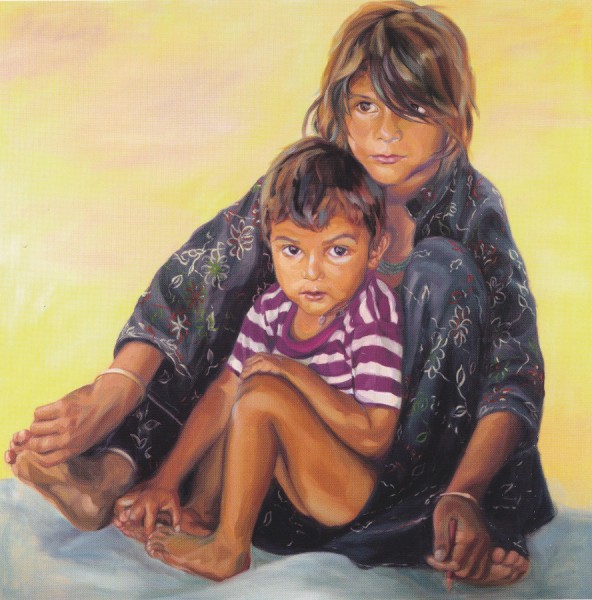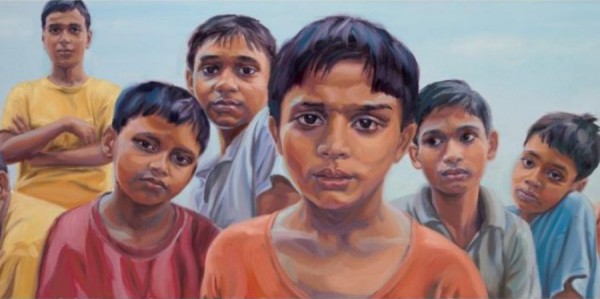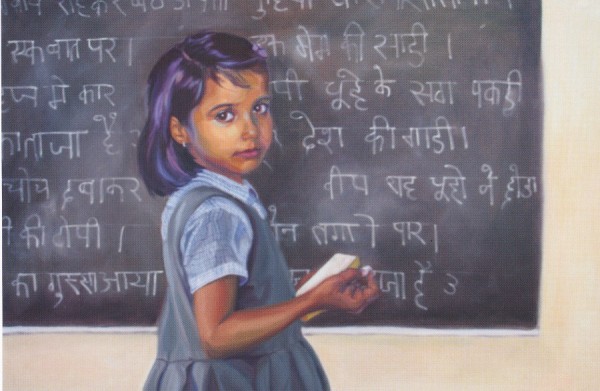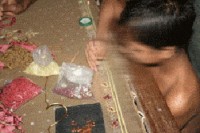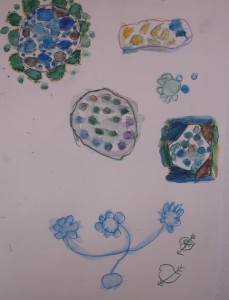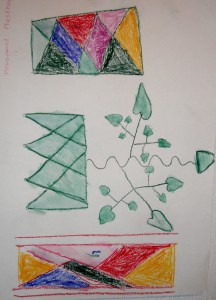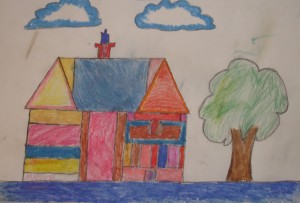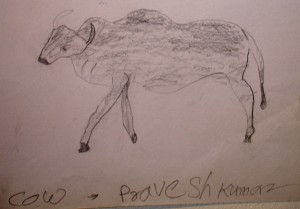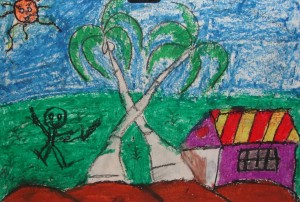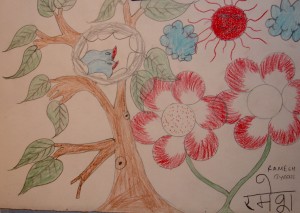 My mother used to say that her vision of entering heaven would go like this: The Pearly gates roll back. St Peter emerges carrying a tool box. After serving tea, gin and tonic or whisky (depending on the time of day) St Peter asks ‘are there any little jobs you want doing Mrs R?’ Well, my version of entering heaven goes like this. The Pearly gates roll back, to reveal the entrance to Jayalakshmi Silk Shop in Cochin. I am greeted by a whole department store stacked from floor to ceiling with silks of every colour, hue and texture beyond my wildest imaginings. Not one, not two, but a hundred shades of each colour. Floaty gossamer chiffons, dense shimmering satins and textured hand-weaves. And even better, there’s a remnant corner where an area the size of a medium-sized planet is packed with ends-of-rolls at crazy give-away prices.
My mother used to say that her vision of entering heaven would go like this: The Pearly gates roll back. St Peter emerges carrying a tool box. After serving tea, gin and tonic or whisky (depending on the time of day) St Peter asks ‘are there any little jobs you want doing Mrs R?’ Well, my version of entering heaven goes like this. The Pearly gates roll back, to reveal the entrance to Jayalakshmi Silk Shop in Cochin. I am greeted by a whole department store stacked from floor to ceiling with silks of every colour, hue and texture beyond my wildest imaginings. Not one, not two, but a hundred shades of each colour. Floaty gossamer chiffons, dense shimmering satins and textured hand-weaves. And even better, there’s a remnant corner where an area the size of a medium-sized planet is packed with ends-of-rolls at crazy give-away prices.
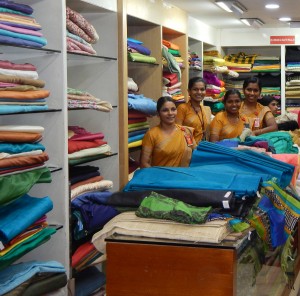
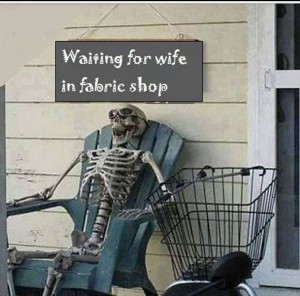 This isn’t the time to be all English in your shopping style. It’s no good in India saying ‘Thank you, I’m just browsing’. In India that is interpreted as ‘I need more help to find what I want’. In my experience, this usually leads to all the contents of the shop spread out on the floor, more coffee drunk than I normally have in a week, and some random thing bought just so I can get out of the shop. Instead, in Jayalakshmi Silks it’s best to enjoy the help and advice of the most delightful sales assistants in the world, and to accept the offers of iced water and a coffee-break when needed. There’s even an air-conditioned ‘waiting room’ with iced water and ginger coffee served to the waiting men-folk before they lose the will to live. Apparently it’s not unknown for groups of women to spend three days there when they’re buying the fabrics for a big wedding. You can see the men nervously fingering their wallets!
This isn’t the time to be all English in your shopping style. It’s no good in India saying ‘Thank you, I’m just browsing’. In India that is interpreted as ‘I need more help to find what I want’. In my experience, this usually leads to all the contents of the shop spread out on the floor, more coffee drunk than I normally have in a week, and some random thing bought just so I can get out of the shop. Instead, in Jayalakshmi Silks it’s best to enjoy the help and advice of the most delightful sales assistants in the world, and to accept the offers of iced water and a coffee-break when needed. There’s even an air-conditioned ‘waiting room’ with iced water and ginger coffee served to the waiting men-folk before they lose the will to live. Apparently it’s not unknown for groups of women to spend three days there when they’re buying the fabrics for a big wedding. You can see the men nervously fingering their wallets!
My previous attempts at fabric buying earlier in the trip weren’t a great success. On my last trip to India (Rajasthan and Gujerat) it was really easy buying fabric from small shops and stalls, but for some reason it was harder in Kerala. Some of the markets and shops I located on Google before the trip were in fact huge stores for wholesale only, and others were selling synthetic tat. I did manage to find a great bazaar in Madurai in Tamil Nadu which had lots of stalls selling silks. ‘Great’, I thought to myself. ‘This is the place’. 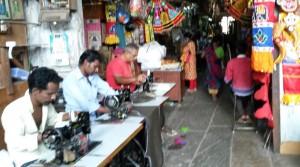 Most of the fabric stalls sell fabric that they give to tailors who make made-to-measure clothes that are stitched up immaculately there and then. (Apologies for the fuzzy focus in this photo, but I was using the phone not the camera). It was a lovely time-warp experience to see the old singer treadle sewing machines like my granny’s.
Most of the fabric stalls sell fabric that they give to tailors who make made-to-measure clothes that are stitched up immaculately there and then. (Apologies for the fuzzy focus in this photo, but I was using the phone not the camera). It was a lovely time-warp experience to see the old singer treadle sewing machines like my granny’s.
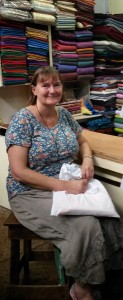
 There’s a story behind why I look so hot and bothered in this photo taken in the bazaar. Firstly, I was too hot. A hot Jane is a dangerous thing, according to my husband. Secondly, I discovered afterwards that my guide had told the stall-holder that I was a big buyer from England who wanted to buy hundreds of yards of silk. I think something got lost in the translation – no wonder the seller was eager! Thirdly, I hate haggling and have no idea how to do it (anyone remember the Monty Python haggling scene, when the buyer talks himself up and up in price?) My version of haggling goes like this. Me: ‘How much is it?’ Seller: ‘X rupees’. Me: ‘OK’. Not how it’s done! And the final problem was that when I converted rupees to pounds I got totally confused with the number of zeros (I blame the heat). That left me thinking I didn’t have enough cash on me, and putting most of the silks I’d carefully chosen back on the shelf and buying just a couple of apologetic half-metres. I cut this photo in half to post it here- the other half has a rather thunderous-looking stall-holder standing next to me. Ah well, you live and learn! And Jayalakshmi Silk Shop made up for it.
There’s a story behind why I look so hot and bothered in this photo taken in the bazaar. Firstly, I was too hot. A hot Jane is a dangerous thing, according to my husband. Secondly, I discovered afterwards that my guide had told the stall-holder that I was a big buyer from England who wanted to buy hundreds of yards of silk. I think something got lost in the translation – no wonder the seller was eager! Thirdly, I hate haggling and have no idea how to do it (anyone remember the Monty Python haggling scene, when the buyer talks himself up and up in price?) My version of haggling goes like this. Me: ‘How much is it?’ Seller: ‘X rupees’. Me: ‘OK’. Not how it’s done! And the final problem was that when I converted rupees to pounds I got totally confused with the number of zeros (I blame the heat). That left me thinking I didn’t have enough cash on me, and putting most of the silks I’d carefully chosen back on the shelf and buying just a couple of apologetic half-metres. I cut this photo in half to post it here- the other half has a rather thunderous-looking stall-holder standing next to me. Ah well, you live and learn! And Jayalakshmi Silk Shop made up for it.
There’s been a long gap since my previous blog post and there’s so much to catch up on. I’ll try to keep abit more up-to-date and to catch up on my trip to Kerala and some of the wonderful colours and designs (not too many holiday snaps, I promise!) And also an update on what I’m working on at the moment, and a wonderful course I’ve just been on with Ruth Issett at Art Vango. Where do I start? But I think the sun’s under the yard-arm so I’m signing off for now.










